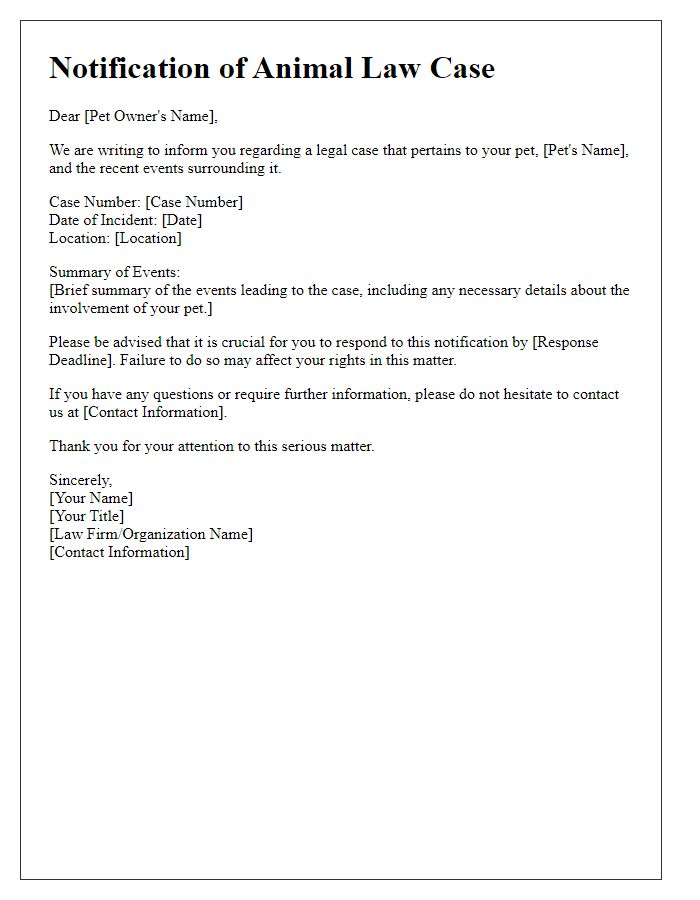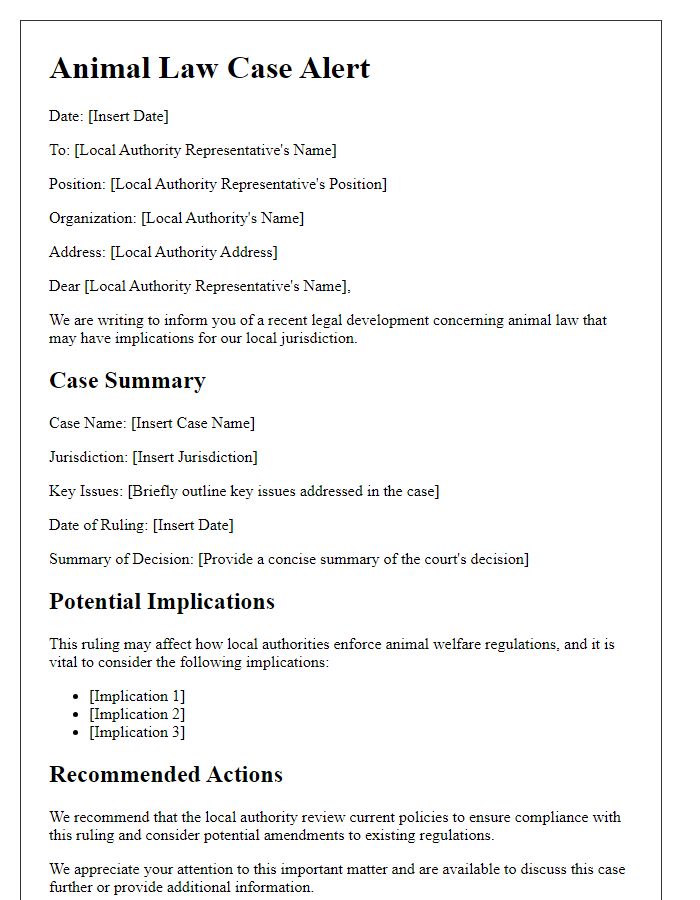Are you curious about animal law and how it can impact the welfare of our furry friends? Understanding your rights and responsibilities can be both enlightening and empowering, especially if you find yourself navigating a legal case involving animals. In this article, we will explore essential elements to include in your letter template, ensuring you communicate effectively and compassionately in these sensitive situations. Join us as we delve deeper into the intricacies of animal law and provide valuable insights for your upcoming case!

Recipient and sender information
Professional legal notices often require precise details. Some key elements typically include the sender's name, address, and contact information, along with the recipient's information, which similarly includes the full name, address, and any relevant identification numbers. The date of the notice should be determined, as well as any specific case references or laws being cited under animal law, such as the Animal Welfare Act. Including pertinent facts, such as case numbers or incidents involving animal safety violations, can add clarity and urgency. Ensure all information complies with local regulations for effective legal communication.
Case and animal identification details
A comprehensive animal law case notice requires precise identification details. The case number, often assigned by local authorities such as municipal courts, is crucial for tracking. The animal's name, physical characteristics (like breed, color, or distinctive markings), and microchip identification number (if applicable) must be included for accurate identification. The date of the incident, such as an alleged mistreatment or illegal capture, should be documented clearly. Furthermore, the location of the incident, including specific addresses or landmarks in jurisdictions like city parks or private properties, enhances context. Including the owner or caretaker's name, contact information, and any witnesses can also aid in investigations and legal proceedings.
Specific legal issues and statutes involved
Animal law cases often involve specific legal issues such as animal cruelty, neglect, and issues related to the treatment and welfare of domesticated or wild animals. Statutes like the Animal Welfare Act (AWA), enacted in 1966, set standards for the humane treatment of animals in various sectors including research, transport, and exhibition. States may have their own legislation regarding cruelty, such as a felony charge for repeated offenses or specific standards for shelter and care. Local ordinances can address issues like leash laws or regulations on breeding practices. Key court cases, such as *Sentencing of Animal Cruelty Offenders*, highlight how judicial systems enforce these statutes and interpret animal rights under existing laws. Involvement of organizations such as the Humane Society or ASPCA often plays a significant role in these legal matters, advocating for animal protection and welfare standards. Legal professionals need to be aware of both federal and state statutes to effectively handle animal law cases.
Desired actions and compliance timeline
Animal law cases often involve complex issues regarding the welfare and rights of animals, such as those governed by the Animal Welfare Act. In these instances, specific actions must be taken to ensure compliance with legal standards, including timely medical assessments for injured animals, secure containment as per local ordinances, and adherence to licensing requirements for pet ownership. Compliance timelines should be clearly defined; for example, a response may be expected within 15 days from the date of notice, along with the submission of required documents such as veterinary records or adoption applications. Documentation of all actions taken should be meticulously recorded to demonstrate compliance with regulations set by governing bodies like the American Society for the Prevention of Cruelty to Animals (ASPCA).
Contact information for further communication
In cases of animal law disputes, ensuring effective communication can significantly influence the outcome. Individuals involved in such matters, including pet owners, breeders, and shelters, should provide concise contact information for any necessary correspondence. Key details may include full names, phone numbers, email addresses, and mailing addresses for all parties involved. Specific channels, such as legal representatives or animal welfare organizations, might require dedicated contact lines for handling multiple inquiries. Timely responses to communication could impact pending court dates or mediation sessions, underscoring the importance of clear and accessible contact details.
Letter Template For Animal Law Case Notice Samples
Letter template of Animal Law Case Update for Animal Welfare Organizations













Comments